Real World Learning in San Diego High Schools
Key Points
-
The school’s purpose is not to serve the public but to CREATE a public. They make walls as permeable as possible with the world outside of school—not citadels apart from the community.
-
Numerous schools across San Diego are embedding internships and client projects in their school day.
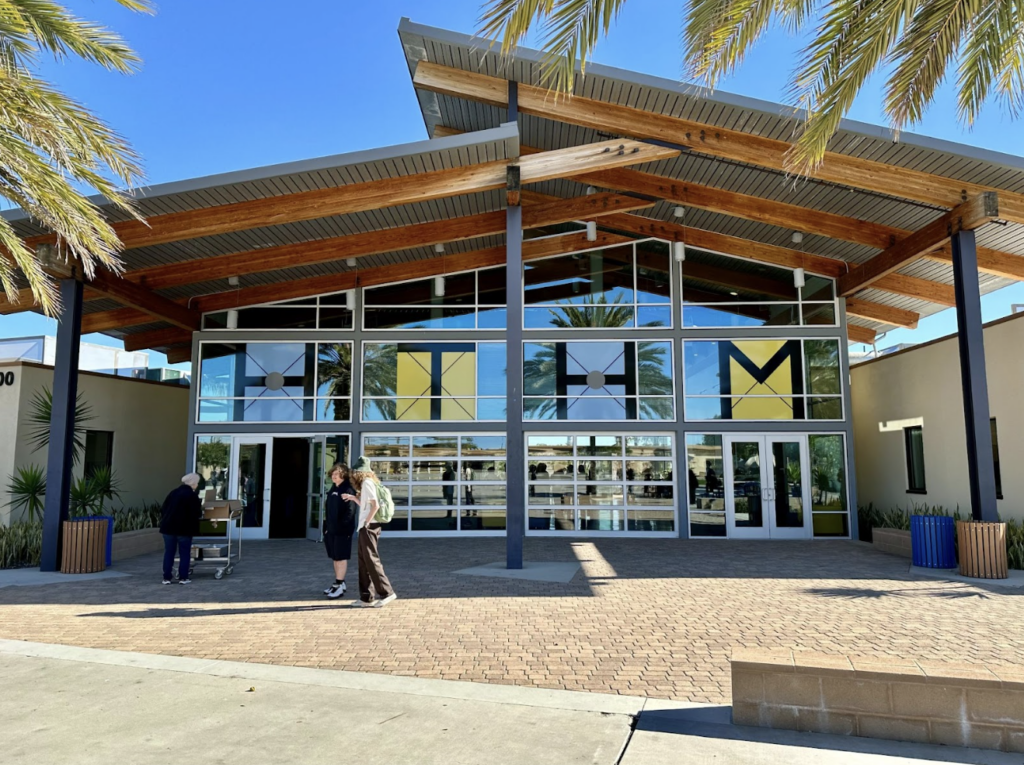
More than 80 Kansas City area high schools are working on Real World Learning, a Kauffman Foundation-sponsored initiative was launched in 2018 with a series of community conversations that illuminated the way to the goal of providing valuable experiences to every high school graduate. These experiences include client projects, entrepreneurial experiences and internships. The
The four high schools in the North Kansas City School District are implementing career academies to integrate real-world learning into pathways for all secondary learners. NKC educators are visiting schools with strong examples of real-world learning. In January they visited four inspiring San Diego schools.
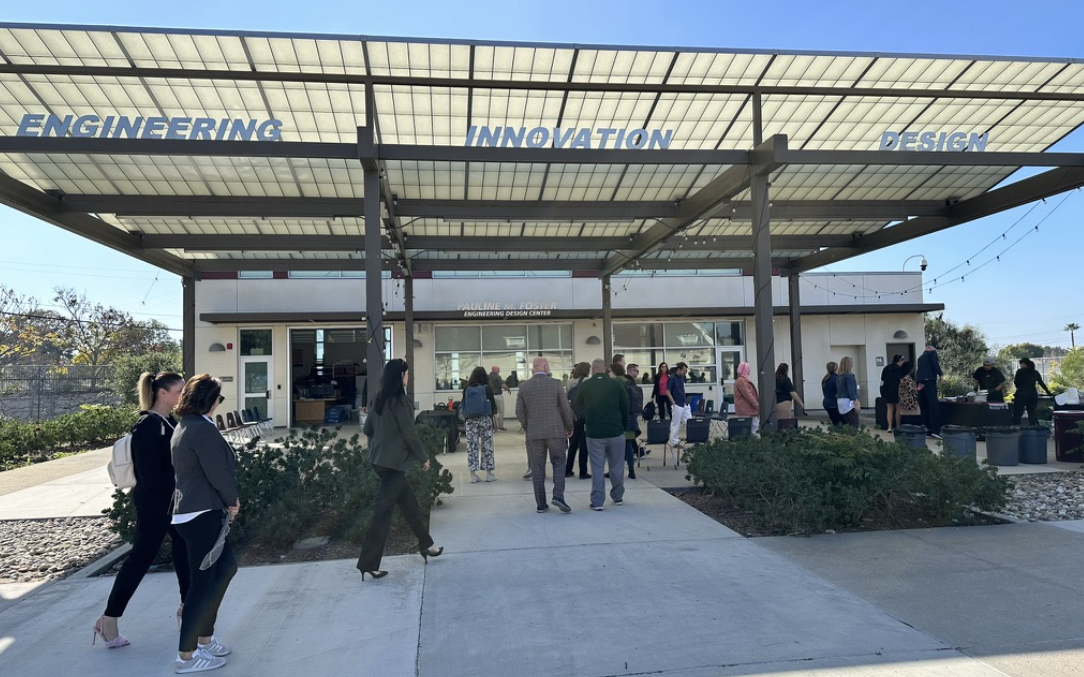
Kearny High
Kearny High opened in 1941 in the Linda Vista neighborhood of San Diego. It’s six miles north of downtown and Balboa Park on the Cabrillo Parkway (SR 163, the first freeway in San Diego County). Mesa College was built on a hill 20 years later right around the corner.
By the 1990s, three-quarters of Kearny students were economically disadvantaged and achievement and graduation rates were low. In 2004, the school reopened as the Kearny High Educational Complex with four small career pathway schools:
- School of Biomedical Science and Technology (BST)
- The School of Digital Media & Design (DMD)
- The Stanley E. Foster School of Engineering, Innovation and Design (EID)
- The School of College Connections (SCC)
In her 20th year at Kearny, Ana Diaz-Booz is the principal of the 1,400-student complex and supervises SCC. Rob Meza-Ehlert is in his 21st year leading DMD. James Michaelian leads EID. Dr. Shannon Garcia heads BST. The quality, longevity, and collaboration of their leadership has been key to the success of the pathway schools.
Kearny schools share a 4×4 block schedule which enables students to complete four classes each semester and allows them to enroll in career courses and electives. Kearny students can graduate with up to 51 college units, a full year of college. Some juniors and seniors enroll in dual enrollment at nearby Mesa College.
Each school has its own entrance, distinctive culture, leadership structure and career pathway curriculum. What’s common is “The Kearny Way,” a shared instructional expectation and a commitment to know every student well. Stronger adult-student relationships have led to a decrease in discipline and an increase in engagement.
The remarkable quality, coherence, and path relevance of Kearny learning stems from strong teacher teams of grade-level cohorts. Shared planning time leads to tight integration of pathway projects that include real-world learning experiences. For example, seniors conduct a capstone project, a culminating presentation focuses on the defense of learning objectives with evidence and examples. Throughout their learning journey, learners reflect on their growth and preparation to step into postsecondary plans.
Clairemont High
A few miles west of Kearny (toward Mission Bay) is Clairemont High, which opened in 1958. Serving 820 students, Clairemont is one of the smaller high schools in San Diego USD.
In 2015, with help from ConnectEd, the Clairemont staff implemented career pathways that gave learners the choice of four academies: Business, Digital Media, Health, and IT/Game Design. Alongside industry partners, teachers help learners build and manage projects across the curriculum. Each academy has about 70 students per grade level.
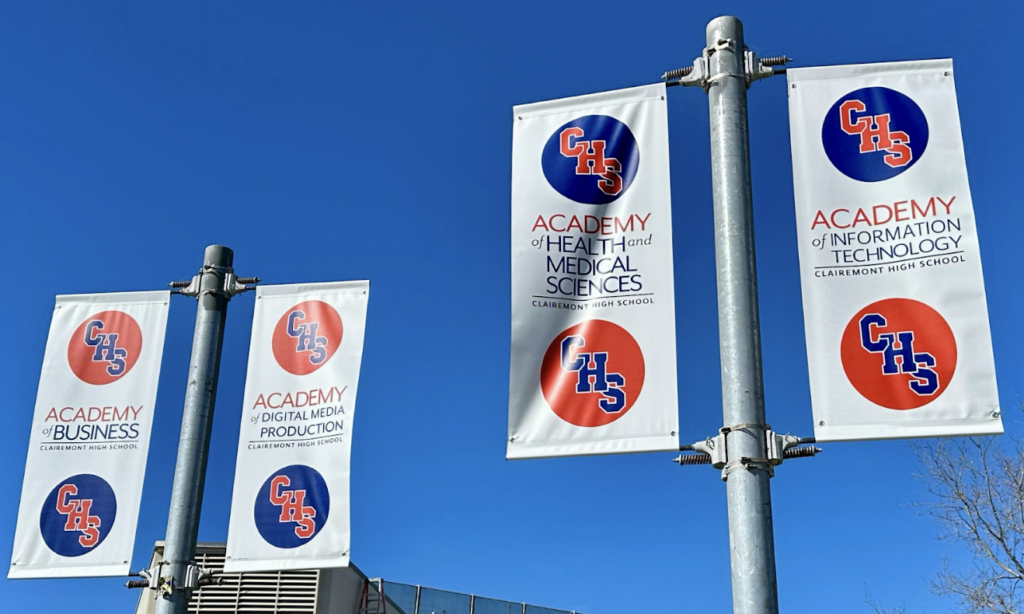
During the first two years of each academy, students have a common experience across an A/B schedule. The Freshman Foundations course provides an introduction to professional skills and project-based learning, goal setting and portfolio development. After these first two years, juniors and seniors begin their more personalized schedules with internships, dual enrollment courses and capstone experiences. Juniors meet with industry mentors monthly during the first semester and take a five-week introduction to Essential Workplace Skills. During the second semester, they engage in a 10-12 week internship (at least 70 hours). About 60% of graduates enroll in community college, while 30% attend four-year colleges and universities.
High Tech High Mesa
In between Clairemont and Kearny and just north of Mesa College is High Tech High Mesa, the sixth and newest K-12 campus in the High Tech High network. Located at an old elementary school, the K-8 grades share a traditional California campus. The high school is an updated facility featuring the classic HTH format with pods of two double classrooms around a common space with shared teacher offices and height, light and exposed structures.
The school’s mission is “to prepare a diverse range of students for postsecondary education, citizenship, and leadership grounded in the deeper learning competencies.” The school features integrated projects, performance-based assessments, internships for all students, and close links to the high-tech workplace.
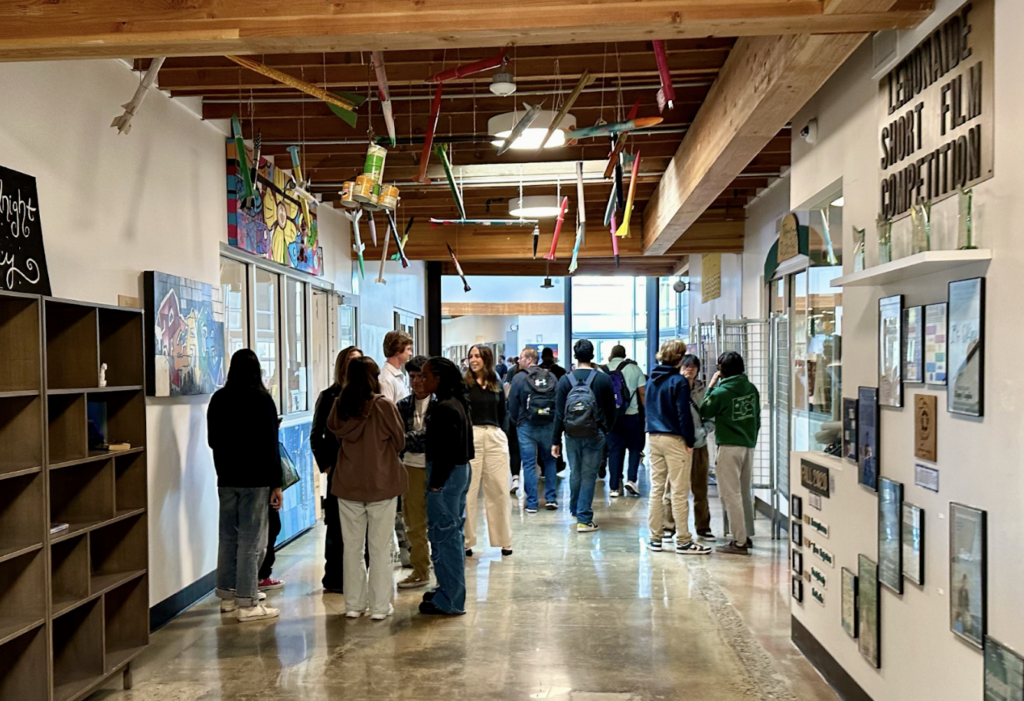
On creating great real-world learning schools, HTH founder Larry Rosenstock said, “Make the city the text, let students do most of the talking, ask students to use their heads and hands, use tech as production more than consumption.”
Rosenstock defined school quality as:
- Students doing work that has value to THEM.
- Students having voice and choice in their learning and are creating new knowledge.
- The school’s purpose is not to serve the public but to CREATE a public. They make walls as permeable as possible with the world outside of school—not citadels apart from the community.
The High Tech High network remains vital and extends its impact through the HTH Graduate School of Education which provides transformative degree programs and professional learning (and great school tours).
Del Lago Academy
Del Lago Academy sits in north-central San Diego County. The academy was opened in 2013 by Escondido UHSD to extend access to careers in healthcare and biotech. The four pillars of the 800-student high school include: heal the world, fuel the world, feed the world, restore and protect the environment. Students engage in an interdisciplinary project focused on one of the pillars each semester.
Cohorts of Del Lago learners take four classes together on Monday, Wednesday and Friday and have a big X Block on Tuesdays and Thursdays that facilitates internships (which are usually six weeks during the junior year).
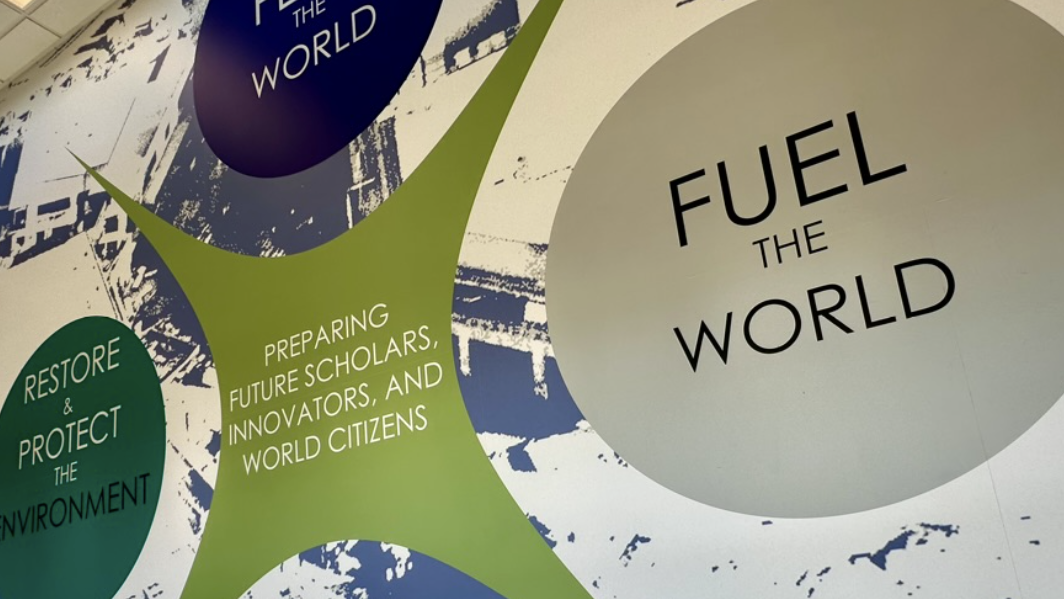
The single-path curriculum includes three years of integrated math. Freshmen take Human Body Systems, Biomedical Science, and Exercise Nutrition. Sophomores and juniors take Biochemistry 1&2.
Teachers model a collaborative culture. They share personalized learning strategies, emphasize reading and writing and health/biotech applications across the curriculum, and use competency-based grading protocols (including opportunities to make up/improve work).
Conclusion
Real-world learning looks different everywhere. Allowing students to focus on complex problems, creating a sense of community within their own cities and creating personalized learning systems that are steeped in centering students, provides students a variety of opportunities to engage in work that matters.
High schools that include smaller learning communities and pathways of community-connected, project-based learning and internships supported by a strong advisory system continue to be one of the formulas of a successful real-world learning framework.
There’s a lot more real-world learning happening in San Diego that we didn’t get to see on this trip. For more check out:
- San Diego Met at Mesa College, an early college high school with internships two days each week.
- Cajon Valley USD and Bostonia Global. See our recap of their World of Work Summit 2023.
- Design39 K-8, see trip report from Sabba Quidwai and Devon Vodicka.



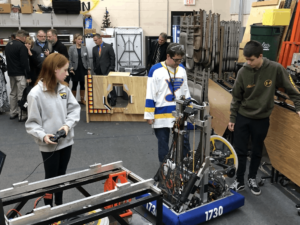
0 Comments
Leave a Comment
Your email address will not be published. All fields are required.